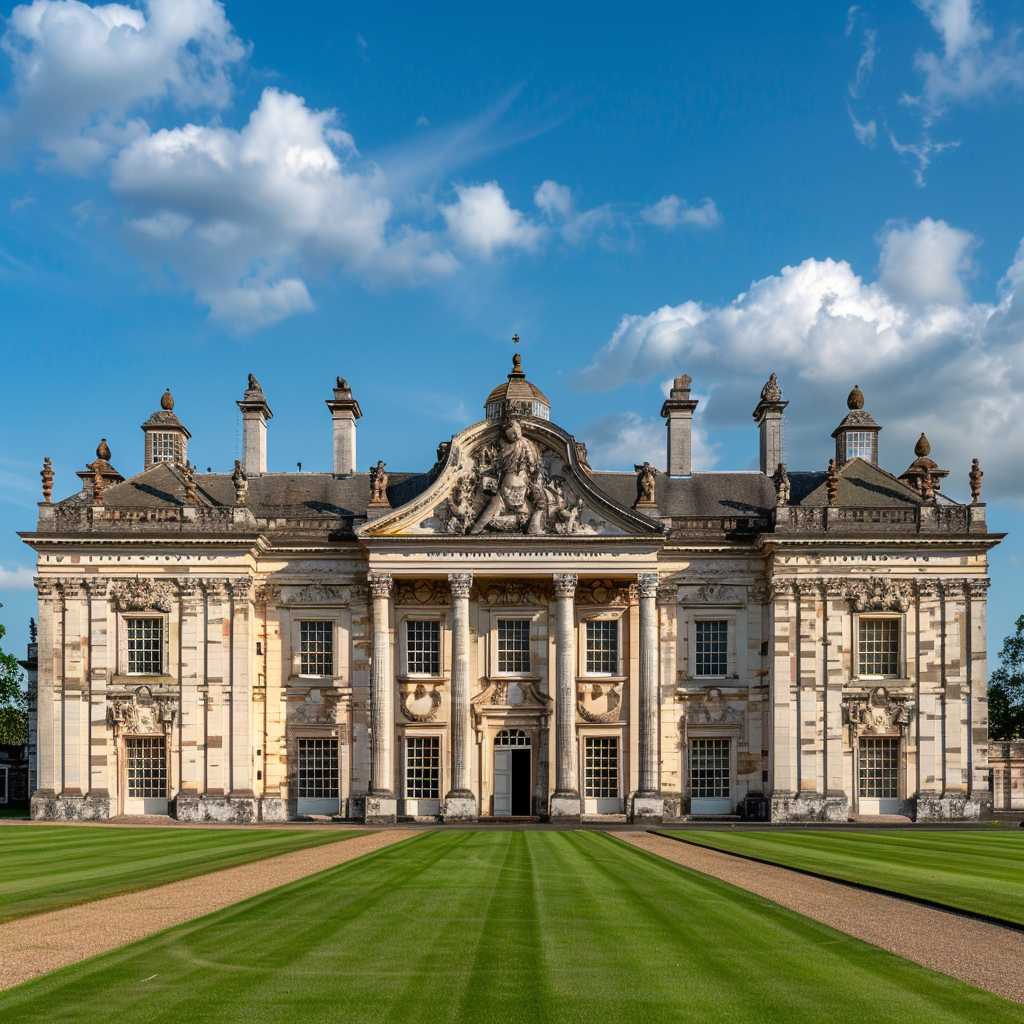The Grandeur of Houghton Hall: A Legacy of Art, Architecture, and Aristocracy
Houghton Hall represents one of the prime examples of Palladian architecture in England and embodies a vital piece of the nation’s cultural heritage. Commissioned by Great Britain’s first Prime Minister, Sir Robert Walpole, this majestic country house stands as a spectacle of grandeur, history, and artistic significance. Set against the lush countryside of Norfolk, Houghton Hall not only served as a home to England’s foremost political family but also as a repository for one of the greatest art collections of the 18th century. In this detailed look at Houghton Hall, we will explore its architecture, historical significance, art collections, and the role it plays in contemporary culture and tourism.
The Origins and Architectural Splendor of Houghton Hall
Houghton Hall’s story begins in the early 18th century when Sir Robert Walpole envisaged constructing a grand country residence that would reflect his standing in British society and politics. Designed by prominent architects Colen Campbell and James Gibbs, with interiors by William Kent, Houghton Hall is an exceptional example of the Palladian style that became fashionable among the aristocracy during that period.
The structure’s exteriors are marked by their classic proportions and symmetry. With a facade of Portland stone, features such as a commanding pediment supported by iconic pillars give it a temple-like grandiosity. The interiors are equally remarkable, boasting lavish decoration including sumptuous furniture, opulent fabrics, intricate wood carvings, and ceiling paintings that exemplify 18th-century taste.
The Collection: Art and Patronage
Initially, Houghton Hall housed Sir Robert Walpole’s vast collection of artworks, which included works by famous artists such as Rembrandt, Van Dyck, and Poussin. This splendid collection is pivotal to understanding the cultural landscape of Georgian England and the tastes and power of one of its key figures.
Unfortunately, due to debt accumulation, Walpole’s grand collection was sold in the late 1700s to Catherine the Great of Russia. What remained were the striking paintings designed explicitly for the house’s interior by William Kent. Today, while the original collections have long been dispensed to The Hermitage Museum in St. Petersburg, Russia, administrations at Houghton have sought to bring together items and artworks fit for the house’s stature either through loans, acquisitions or through recreating the atmosphere that once was.
Historical Significance and Conservation Efforts
The estate has been maintained for centuries by the descendants of Sir Robert Walpole, now the Cholmondeley family. It was given a major restoration in the 1980s and continues to be a priority for conservationists.
The historical value of Houghton Hall extends beyond architecture and art; it serves as a testament to the social changes within British aristocracy from the 18th century to modern times. Carefully preserved documentation provides scholars with insights into the lives of those who lived and worked here – from the nobility to the house’s extensive staff.
Houghton Hall in Modern Times: Education and Tourism
Today, Houghton Hall remains an important tourist attraction and educational resource. Offering tours which showcase its gardens designed by historic landscape architects like Charles Bridgeman alongside contemporary installations such as those by artist Richard Long or James Turrell’s renowned Skyspace installation merging historical sight with modern art wonders.
Events and Exhibitions
The estate hosts a variety of events throughout the year from art exhibitions featuring contemporary artists to traditional country fairs and horse trials. Temporary exhibitions often allow rare glimpses into private collections complementary to Houghton’s history.
Notes
Image Description
A stately image capturing Houghton Hall against a blue sky with partial views of its beautifully manicured lawns in front. The picture demonstrates Palladian architectural elements such as symmetry and grand columned facades.
